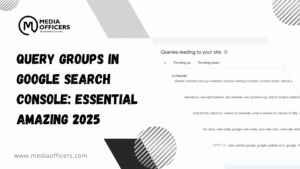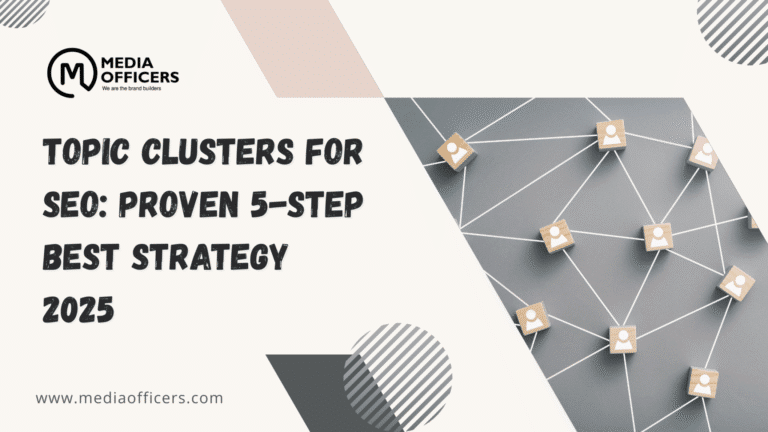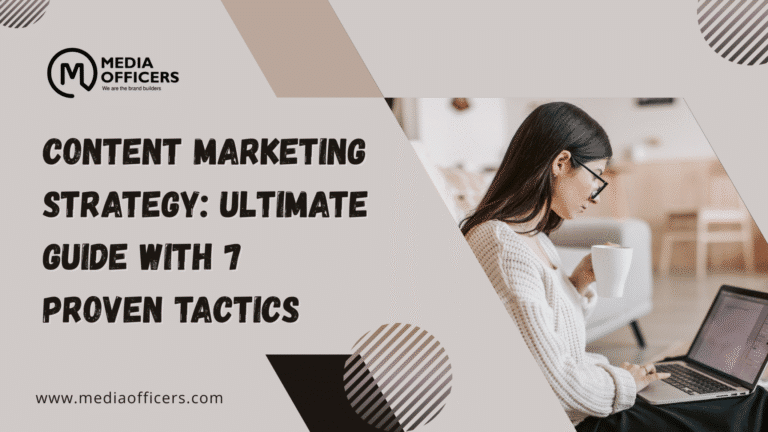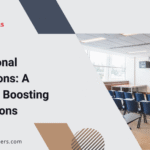Query groups in Google Search Console are a new feature in Search Console Insights that group similar search queries to reveal main audience topics. This launch, announced by Google, is designed to give a high level view of what your audience cares about without sifting through every individual query.
As Google explains, Query groups in Google Search Console help you move from a cluttered list of individual terms to a concise overview of the main topics your audience explores. The focus is on understanding intent and interest, not on altering how pages rank. The result is a more approachable way to plan content, optimize pages, and test ideas based on how people actually search.
What are query groups in Google Search Console?
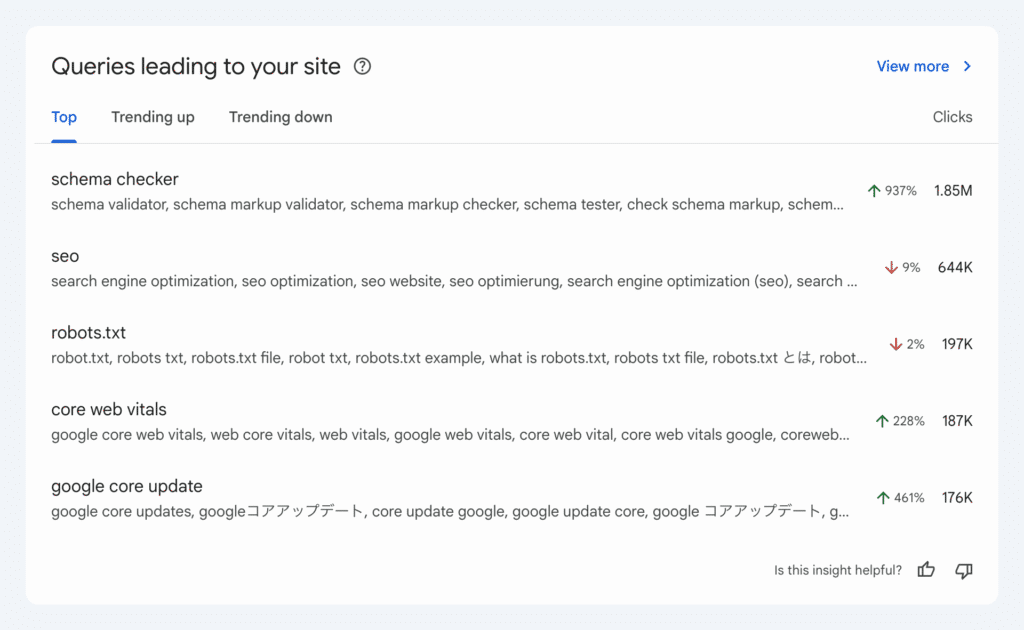
Query groups in Google Search Console are a way to cluster related search queries into topic driven groups. Instead of viewing dozens or hundreds of distinct queries, you see groups that represent the core interests of your audience. These groups are generated by artificial intelligence and may evolve as new data arrives and as the AI models learn from more searches.
One important caveat: these groups exist for insights only and do not affect ranking. They are intended to provide a high level perspective of user queries, helping you identify content ideas, optimize current pages, and measure topic coverage across your site.
By design, the grouping adapts over time. As search patterns shift or volume changes, the composition and labeling of groups may change to reflect the current topical landscape. This dynamic nature is a feature, not a flaw, because it keeps you aligned with real user behavior.
How the AI groups queries work
The core of the feature is an AI engine that processes a propertys query data to create topic based clusters. It considers variations and synonyms, common intents, and related keywords to form cohesive groups. For example, variations of seo related searches such as seo optimization and search engine optimization may be bundled into a single seo group. The labels you see are intended to be intuitive, helping you quickly grasp the dominant topics without reading every term.
Because the groups are AI generated, they can change as Google refines its models or as you accumulate more search data. This means you should view the groups as an evolving dashboard rather than a fixed report. Regularly revisiting the groups can reveal emerging opportunities or shifting audience interests that you might otherwise miss when examining individual queries alone.
Key characteristics to know
- AI driven grouping makes it faster to identify broad topics rather than chasing dozens of minor terms.
- Non ranking impact the groups are for insights, not signals used by ranking algorithms.
- Dynamic labels groups may shift as data grows, so expect occasional reclassification.
- Scope depends on volume large query volumes provide richer groups, while very small sites may see slower rollout.
Why this matters for SEO
For seasoned SEOs and content teams, query groups in Google Search Console align with the long held best practice of topic based optimization. Rather than chasing every keyword variation, you can anchor content around core topics and improve coverage across related queries. This supports a more strategic approach to content creation, internal linking, and FAQ optimization, all aimed at satisfying user intent and increasing topical authority.
By offering a high level map of audience interests, the feature helps you validate content gaps, prioritize topics to cover, and detect underperforming areas. The groups make it easier to spot opportunities where a single piece of content could address multiple related queries, improving overall page usefulness and engagement signals that matter for user satisfaction.
In practice, this means you can use the groups to guide your editorial calendar. If a major seo group shows strong interest but your pages on that topic are thin, you now have a concrete signal to deepen coverage. If another group shows rising interest, you can plan updates or new content to capture evolving intent before competitors do.
Using Query groups in your workflow
To get the most from Query groups in Google Search Console, integrate the insights into your existing SEO workflow. Here is a practical sequence you can follow:
- Access and interpret open Search Console Insights and review the current topic groups. Look for the dominant groups and note any changes since your last check.
- Map groups to content themes align each major group with one or more pages or content ideas. For example a seo group can map to existing blog posts about SEO strategies or a plan to cover on page optimization topics.
- Identify gaps compare groups to your current content catalog. Where are there high interest groups with poor coverage, you have a content opportunity.
- Create or optimize content produce new content or update existing pages to provide comprehensive coverage of a topic. Use the groups to guide keywords, FAQs, and internal linking structures.
- Measure impact after updates, monitor the groups over time to see if interest shifts or if your expanded content improves click through and engagement within Search Console Insights.
There is a practical example embedded in the current landscape: the tool may lump related phrases like search engine optimization, seo optimization, seo website, seo optimierung, and search engine optimization seo into a single seo group. This consolidation helps you see the overall interest in the topic rather than chasing dozens of variations. In some cases, this consolidation can lead to visible changes in click data for specific queries, such as a reported 9 percent drop in clicks for SEO related queries on the site wide level. Remember, these changes reflect user behavior and how Google groups queries, not a change in ranking position for your pages.
Availability and rollout
Google has said that query groups will roll out gradually over the coming weeks. The feature appears as a new card within the Search Console Insights report and is currently available only to properties that generate a large volume of queries. The rationale is simple: when there is substantial data, AI driven grouping yields more meaningful topics. For sites with lower query volumes, the insights may be less pronounced or slower to appear, but the capability is expected to expand as data grows across properties.
As with many new Google features, rollout timing may vary by property and region. If you do not see the new query groups card yet, there is a good chance it will arrive in a future update. The broader rollout is designed to ensure a stable experience while the AI models are tuned for diverse data sets.
Practical benefits for marketing teams
Marketing teams often juggle multiple campaigns, content calendars, and briefs. Query groups in Google Search Console can streamline collaboration by offering a shared understanding of what audiences care about. Teams can discuss content strategy around core topics with confidence, knowing that the data reflects real user queries at scale. This shared view fosters alignment between content, product, and performance teams and reduces the friction of translating keyword ideas into actionable topics.
For smaller teams or individuals new to SEO, the grouping feature lowers the barrier to entry. Beginners can quickly grasp the concept of topic based optimization and learn how to brainstorm content ideas that respond to the most important audience topics. In short, the tool accelerates learning and empowers teams to act on data with less manual clustering and fewer spreadsheets.
Limitations and considerations
While the value of query groups is clear, there are important caveats to consider. The groups are generated by AI, which means they may occasionally misclassify queries or merge topics in ways that feel surprising. It is wise to review the group labels and verify that they accurately reflect your content and audience. Additionally, because the groups evolve, historical comparisons may require care. A topic that existed as a single group last quarter might migrate into multiple sub groups as the AI models refine their understanding of intent.
Another limitation to acknowledge is data volume. Properties with limited query activity may not generate robust groups yet. In such cases, the insights might be less actionable until more data accumulates. As a best practice, revisit the groups every few weeks, especially after publishing new content or running campaigns that could influence search behavior.
Best practices for maximizing value
- Treat groups as topic maps use them to identify content themes rather than exact keyword targets.
- Cross reference with existing data compare group insights with landing page performance, user behavior, and conversion data to ensure a holistic view.
- Update content in waves when you see a new or rising group, create or enhance content to address the topic comprehensively.
- Leverage FAQs and schema for groups that map to questions or needs. Add structured data to help search engines understand intent and improve discovery.
- Monitor evolution note how groups change over time and adapt your editorial calendar accordingly.
Frequently Askeded Questions
What are query groups in Google Search Console used for?
They provide a high level view of the main topics behind user queries, helping you plan content and optimization around audience interests without getting lost in individual search terms.
Will using query groups affect how pages rank?
No. The groups are for insights and content planning only. They do not influence ranking signals or Google search results.
Can I export or share the group data?
The publicly documented behavior focuses on viewing within the Search Console Insights interface. If you need to share findings, you can summarize the groups in a report or presentation and reference the core topics you identified.
What should I do if a group changes over time?
Treat evolving groups as a signal of shifting audience interest. Reassess your content strategy, update pages to address the new focus, and adjust your editorial calendar to capture emerging demand.
Conclusion
Query groups in Google Search Console offer a practical, AI powered lens on how audiences search, organized into meaningful topic clusters. By providing a high level view of audience intent, this feature helps both beginners and experienced SEOs prioritize content, align teams, and iterate faster on strategy. As rollout continues and data volumes grow, expect deeper, more actionable insights that can guide your content planning, production, and optimization in a way that aligns with real user behavior. Embrace the trend, monitor its evolution, and let topic based optimization shape your approach to search performance in the months ahead.

